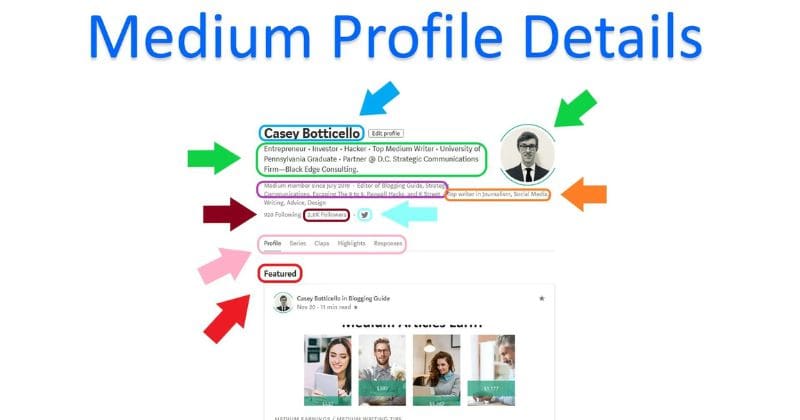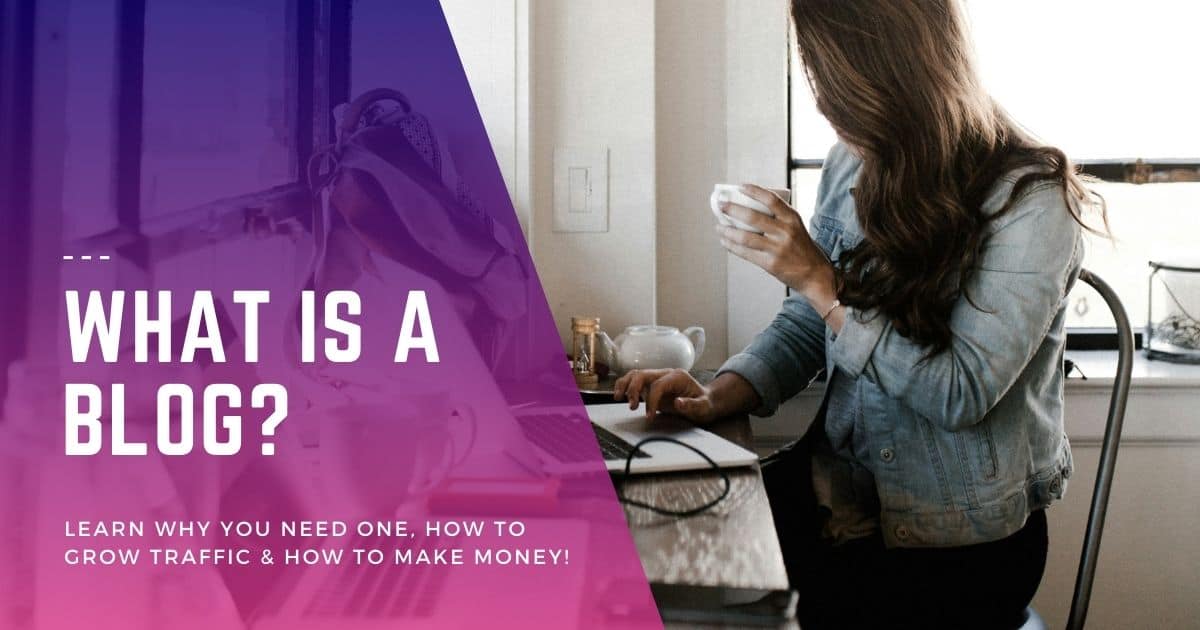Starting a blog on Medium is like unlocking a treasure chest of words for the world to see. It’s your very own corner in the vast digital universe where you can share thoughts, insights, and experiences. As a seasoned digital marketer and professional blogger, I am here to guide you through this process of starting a blog. Whether you are interested in freelance writing or want to publish articles on WordPress, I have the expertise to help you succeed.
Medium is your one-stop shop for blogs, offering an accessible platform for freelance writing. You don’t need to be tech-savvy; Medium handles the complex publishing parts, letting you focus on crafting captivating content. You can format your posts on WordPress, embed multimedia, and earn from sponsored articles. Imagine it as your digital canvas, waiting for your vibrant strokes of words.
But Medium isn’t just about writing articles; it’s about community. You connect with fellow writers, exchange feedback, and find potential collaborators. Let’s start by publishing your bio on WordPress that captures your unique voice. Ready? It’s time to step into the inviting world of Medium blogs.
Starting a Blog on Medium: Step-by-Step
Create an account on medium.com to get started.
The first step to start your blog on Medium is to create an account. Head over to medium.com and click on the “Sign Up” button. You can sign up using your Google or Facebook account or create a new account with your email address. After signing up, choose topics that interest you for a personalized content feed.
Customize your profile by adding a bio and profile picture.
After creating your account on a WordPress blog, it’s time to make your profile stand out. Click on your profile picture in the top-right corner of the screen and select “Profile.” Here, you can add a bio describing who you are and the topics you plan to write about in your articles. Making this section engaging is important as it will help readers connect with you. Upload a profile picture representing your personality or brand before hitting the publish button on your blog.
Choose a unique username
Once you have successfully signed up for WordPress, it’s time to choose a unique username that represents your brand or niche. This username will be displayed on your profile and help readers identify you across the platform. Make sure to select something memorable and relevant that aligns with your blog’s theme or subject matter. After selecting your username, you can start publishing articles on the platform to share your content with the world. It’s an easy and efficient way to get your publications out there.
Explore different publications and follow topics that interest you.
One of the great features of Medium is the ability to discover and follow publications that align with your interests. On the homepage, click “Publications” in the top navigation bar. Browse through various blogs covering topics ranging from technology to lifestyle. When you find one that resonates with you, click “Follow” to see their articles in your feed. This not only helps you stay updated but also inspires your own blog posts. Publish your blog posts using WordPress and follow the guidelines for better reach and engagement.
Start writing your first blog post using the intuitive editor provided by Medium.
Now comes the exciting part – writing your first blog post! To get started, click on the green “+” button at the bottom-right corner of any page on Medium and select “Write story.” The intuitive editor will open up, allowing writers to focus solely on writing articles without distractions. With WordPress, you can easily publish your articles and reach a wider audience.
Medium provides various formatting options within its editor, allowing writers to structure their articles effectively. Utilize features such as headings, subheadings, bold text, italics, bullet points, and numbered lists to make your WordPress blog post visually appealing and easy to read. Organizing your thoughts in a structured manner enhances readability and engages readers more effectively when you publish your content.
Add relevant tags to increase visibility and reach more readers.
Adding relevant tags is essential to ensure your WordPress blog post reaches a wider audience. Tags act as keywords that help categorize your articles and make it easier for readers interested in specific topics to find your published posts. After finishing writing, scroll down to the “Tags” section on the right-hand side of the editor. Enter tags related to your blog post’s subject matter and title, separating each tag with a comma. Aim for popular but still specific enough tags to attract your target audience.
Preview your blog post before publishing
Before hitting that publish button on your WordPress page, take advantage of Medium’s preview feature. This allows writers to see how their articles look across devices such as desktops, tablets, and mobile phones. By previewing your post beforehand, you can ensure that everything appears as intended and make any necessary adjustments before sharing it with the world.
Publish your blog post and share it with others through social media or email.
Once satisfied with your blog post, click on the “Publish” button at the top-right corner of the WordPress editor. Congratulations! Your blog post is now live on Medium and available for readers to engage with. Consider sharing it on social media platforms like Twitter, Facebook, or LinkedIn to maximize its reach. You can also send it directly to friends or subscribers via email. Encourage readers to engage with your content by leaving comments or clapping (Medium’s equivalent of likes) if they find it valuable.
Starting a blog on Medium is an excellent way to publish your articles and share your thoughts and ideas with a wide audience. By following these step-by-step instructions, you’ll be well on your way to becoming a successful blogger on this popular WordPress publication platform.
Understanding Medium: A Beginner’s Guide to Writing
Medium is a good platform for new writers looking to publish articles and start a WordPress blog. It provides an intuitive writing environment that caters to bloggers of all levels of expertise. Whether you’re a seasoned writer or just starting out, Medium offers a user-friendly interface that makes the writing process seamless.
One of the standout features of Medium is its support for long-form articles and stories. Unlike other platforms that limit your word count, Medium encourages you to delve deep into topics and explore them thoroughly on your WordPress blog. This lets you publish comprehensive insights and engage readers seeking in-depth information on particular subjects. So don’t hold back when it comes to sharing your knowledge and experiences!
Good Content Structure
Use headings, subheadings, and bullet points to enhance the readability of your WordPress blog articles. These formatting options help break down your content into easily digestible sections, making it more appealing to readers. By structuring your articles with clear headings and subheadings, you guide your audience through the different sections while ensuring they can quickly find the information they need to publish a compelling title.
Adding Multimedia
Another advantage of using Medium for your WordPress blog is its support for multimedia elements within your posts. You can publish images, videos, tweets, and other visual or audio content directly into your stories. Adding relevant multimedia enhances the overall reading experience for your audience and helps convey complex ideas more effectively. So if you have compelling visuals or videos that complement your written content, be sure to include them in your good posts.
Content Formatting
Formatting options like bold text, italics, and block quotes are available on Medium to add emphasis where needed for writers who publish articles on WordPress. These tools allow you to highlight key points or draw attention to specific parts of your writing. These formatting options can significantly impact how readers perceive and engage with your content.
Audience Engagement
Engagement is crucial when you publish articles on WordPress. The platform provides a comments section where readers can share their thoughts, ask questions, or provide feedback on their stories. You must actively engage with your readers by responding to their comments and fostering meaningful discussions. This not only helps you build a loyal reader base but also allows you to gain valuable insights and perspectives from your audience.
Optimizing Your Medium Profile for Maximum Impact

Craft a compelling bio that showcases your expertise and interests.
Craft a compelling Medium profile bio highlighting your expertise and interests as a writer. Your bio is the first impression readers will have of you, so it’s essential to make it count. Be authentic and concise, using language that resonates with your target audience. This will help you connect with readers and increase your chances of getting your stories published.
Consider including relevant keywords in your bio to improve discoverability. If you’re a fashion blogger, for example, include terms like “fashion enthusiast,” “style tips,” or “trendsetter” in your bio article. This will help potential readers find you when searching for content related to those keywords.
Share information about any notable achievements or published articles to establish credibility. If you’ve been featured in prestigious magazines or websites, mention it in your bio. This can boost your authority and attract more readers, especially writers interested in your stories.
Add relevant links to your website or social media profiles in the profile settings.
One of the great features of Medium is the ability to publish articles and stories. Add links to your website or social media profiles within your profile settings to take advantage of this opportunity. Make sure the links are relevant to your blog’s niche or topic.
For instance, if you are a fitness writer looking to publish an article on your fitness blog, link to your fitness-related website or Instagram account where readers can find additional content from you. By providing these links, you drive traffic to other platforms and allow interested readers to engage with more of your fitness stories.
Remember to regularly check and update these links when publishing articles, stories, and other content on Medium. If you change social media handles or update your website domain, be sure to reflect those changes in your Medium profile settings as well. This will help writers maintain consistency and ensure their work reaches the right audience.
Choose an eye-catching profile picture that represents your personal brand.
Your profile picture on Medium serves as a visual representation of yourself and should align with the personal brand you want to convey. Opt for an eye-catching image that captures attention and resonates with your target audience. When you publish stories or articles, ensure your profile picture reflects the story or article you share.
Consider using a professional headshot or a high-quality photo that showcases your personality when you publish an article. For example, if you’re a travel blogger, use a picture of yourself in an exciting destination to evoke curiosity and inspire wanderlust in your readers and fellow writers.
When you publish stories on Medium, using high-quality images is important. Blurry or low-resolution images can give off an unprofessional vibe, which may not leave a positive impression on readers. Remember that your profile picture is often the first thing readers see when they come across your articles, so make sure it represents you as a writer in the best possible way.
Customize your Medium URL to make it more memorable and reflect your niche.
By default, Medium assigns you a URL based on your username when you publish an article. However, as writers, you can customize this URL to make it more memorable and reflect your niche or brand. This is particularly useful for sharing your stories with a wider audience.
To change your Medium URL and publish your articles, click “Settings” and click “Profile.” Look for the section where writers can edit their usernames. Choose a username that aligns with your blog’s topic or personal brand to create consistency across platforms. For example, if you run a food blog called “Tasty Bites” and write stories about delicious recipes, consider changing your username to “@TastyBites” for a cohesive online presence.
A customized URL looks more professional and helps writers and readers remember and associate it with the stories they produce and consume on the medium. This can ultimately lead to increased recognition and engagement with your blog.
Complete SEO Setup and Profile Optimization

Optimizing your profile for search engines and readers is crucial for writers on the medium platform. Implementing a complete SEO setup and profile optimization strategy can increase your visibility, attract more readers to your stories, and grow your audience.
Optimize Your Medium Profile
Your profile page is the first impression readers get when they visit your blog. Writers must make it engaging, informative, and optimized for relevant keywords. Here are some steps to optimize your Medium profile for stories and attract readers.
- Craft an Engaging Bio: Write a compelling bio that reflects who you are as a blogger and includes relevant keywords related to your niche or topics. This will help search engines understand what your blog is about.
- Description with Keywords: Utilize the description section of your profile to provide more information about yourself and incorporate additional target keywords naturally. This will further enhance the visibility of your blog in search results.
- Link Building: Take advantage of the option to include links in your bio or description section. If you have an affiliate marketing program or other partnerships, consider linking them here to generate traffic and potential revenue.
Descriptive Titles for Blog Posts
The titles of your blog posts play a significant role in attracting both search engine bots and human readers. It is important to consider the keywords to optimize the titles effectively for writers and readers. These keywords help capture your stories’ essence and make them more discoverable on search engines and Medium platforms.
- Incorporate Target Keywords: Use descriptive titles that incorporate target keywords naturally within them. This helps search engines understand the content of your post better.
- Be Clear and Concise: Ensure the title accurately represents the post’s content while being concise enough to grab attention quickly.
- Consider Using Numbers or Questions: Adding numbers (e.g., “10 Tips for…”) or posing questions (“How Can You…”) can make titles more engaging and increase the likelihood of readers clicking through.
Internal Links and Navigation
Internal linking within your blog posts improves readers’ navigation and boosts SEO for writers. Here’s how you can utilize internal links effectively to enhance the medium of your story and engage readers with compelling stories.
- Improve Navigation: Include relevant internal links within your posts to guide readers to related content on your blog. This helps them explore more of your work, increasing page views and engagement.
- SEO Benefits: Internal links also provide SEO benefits by helping search engines crawl and index your website more efficiently. They establish connections between different pages and contribute to a better overall user experience.
Utilize Meta Descriptions Effectively
Meta descriptions are short snippets that appear below the title in search engine results pages (SERPs). Optimizing them can entice medium readers to click through to your blog post. Follow these tips to attract writers and readers with captivating stories.
- Be Compelling: Craft meta descriptions that summarize the content of your post engagingly and concisely, enticing readers to click through for more information.
- Include Keywords: Incorporate relevant keywords naturally into your meta descriptions, as this can improve visibility in search results.
- Maintain Relevance: Ensure that the meta description accurately reflects the content of the blog post to avoid misleading or disappointing readers who click through.
Header Tags for Organization and SEO Impact
Using header tags (H1, H2, etc.) in your blog posts not only helps writers with organization but also has SEO benefits on Medium.
Choosing Article Tags and Topics for Maximum Visibility

Researching popular topics within your niche is crucial for writers starting a successful blog on Medium. By understanding what writers are searching for and interested in, you can tailor your content to meet their needs and attract more readers. Here are some tips to help writers choose article tags and topics to maximize visibility.
- Utilize tools like Google Trends or BuzzSumo: These tools provide valuable insights into the popularity of different topics. You can identify trending subjects within your niche, see how they have performed over time, and compare them to related topics. This research will give you a clear idea of what content resonates with your target audience.
- Select highly relevant but not overly competitive tags: When choosing article tags, it’s important to strike the right balance between relevance and competition. While using popular tags may seem tempting, they often have high search volumes, making it difficult for your content to stand out. Instead, opt for tags that are specific to your topic but still have a decent audience size.
- Focus on long-tail keywords: Long-tail keywords are longer phrases that are more specific than generic ones. They may have lower search volumes individually but can collectively drive significant traffic to your blog. Incorporating these targeted keywords into your article tags increases the chances of ranking higher in search engine results pages (SERPs) and attracting relevant readers.
- Leverage trending topics or current events: Keeping up with trends and current events can provide excellent inspiration for creating timely content that captures people’s attention. Whether it’s discussing a viral news story or providing insights on an emerging trend within your niche, incorporating these topics into your blog posts can help boost visibility and engagement.
- Balance evergreen content with trending topics: While it’s essential to capitalize on trending topics, don’t neglect evergreen content—the type of content that remains relevant over a long period. Evergreen articles provide long-term value by attracting consistent traffic even after the initial buzz subsides. By striking a balance between evergreen and trending topics, you can attract immediate attention while maintaining a steady traffic flow in the long run.
- Categorize articles under appropriate publications or create your own: Medium allows you to categorize your articles under specific publications or create your own publication. Categorizing your articles helps them reach a broader audience interested in that particular topic. If existing publications are relevant to your niche, consider submitting your articles to them for increased visibility and exposure.
Over to You
Alright, you’ve got the basics on how to start a blog on Medium. We chatted about signing up, making your first post, and even how to make your profile look awesome. Don’t forget the tips on using the right keywords and sharing your blog on social media. So, what are you waiting for? It’s time to start typing and share your thoughts with everyone.
You also know how to pick good article tags and what topics will grab people’s attention. This will help your blog get seen by even more people on Medium. So, go ahead and start writing those posts. You’ve got this!
FAQ
Can I make money from my blog on Medium?
Earning money on Medium is possible through the Medium Partner Program, which pays writers based on the engagement their stories receive. Payment factors include reading time and claps from Medium members. To participate, you must have a Medium account and meet eligibility criteria, including having a connected Stripe account for payouts.
Is it necessary to have a large following to succeed on Medium?
A large following on Medium is not a prerequisite for success. The platform’s algorithm prioritizes quality and engagement, distributing articles to interested readers regardless of the writer’s follower count. Through the Medium Partner Program, earnings are primarily determined by member engagement, including read time and claps.
Can I cross-post my blog articles from other platforms onto Medium?
Cross-posting blog articles from other platforms to Medium is feasible. However, to mitigate SEO issues related to duplicate content, utilize Medium’s import tool, which automatically adds a canonical tag pointing to the original source. This signals search engines to prioritize the original article in search rankings.
How often should I publish new articles on my Medium blog?
The frequency of publishing on Medium varies based on goals and audience engagement. However, a common recommendation is to post at least once a week to maintain reader interest and improve visibility. Consistency and high-quality content tend to result in higher engagement and potential earnings through the Medium Partner Program.
Are there any specific writing guidelines or rules I need to follow on Medium?
Medium does not enforce specific writing styles but has content policies prohibiting hate speech, harassment, and disinformation. It’s beneficial to use proper headings, bullet points, and images for SEO and readability. Consistency in tone and style can enhance reader engagement and retention.



